Riding Through A Moving Picture
The Boston Globe - Travel - Sunday, September 19, 2010
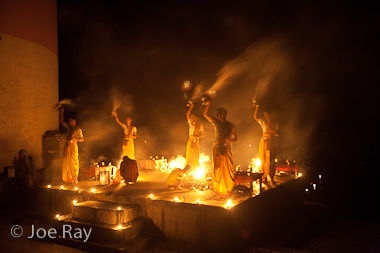
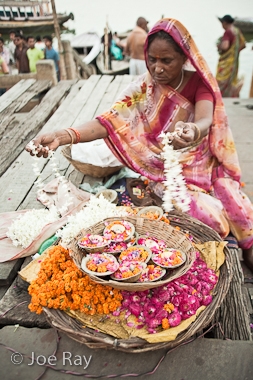
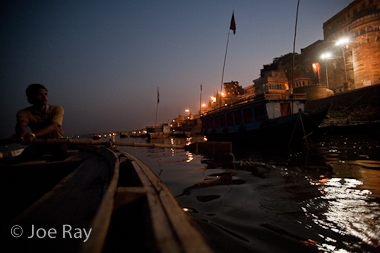
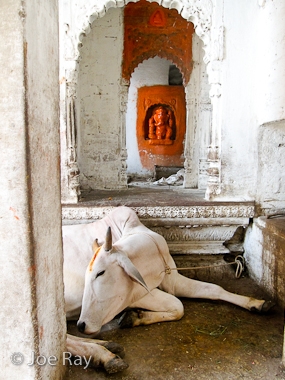
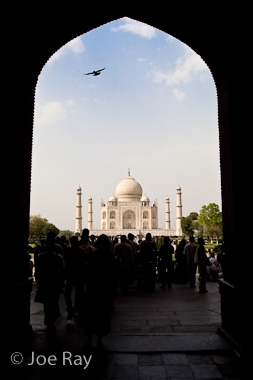
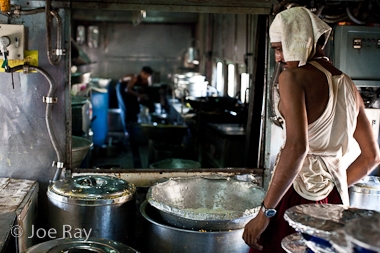
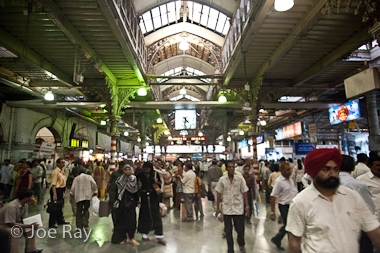
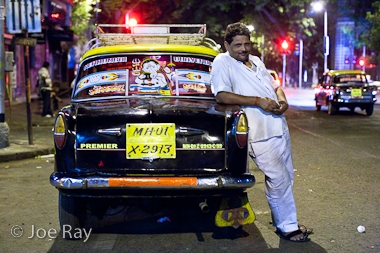
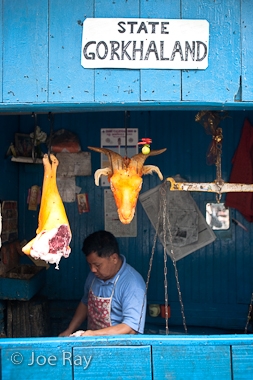
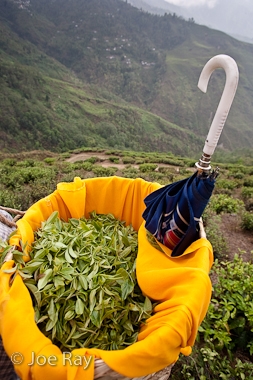
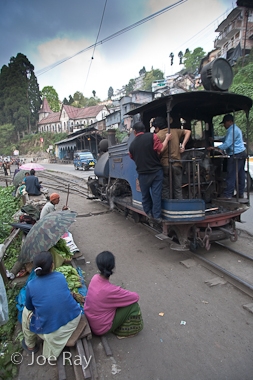
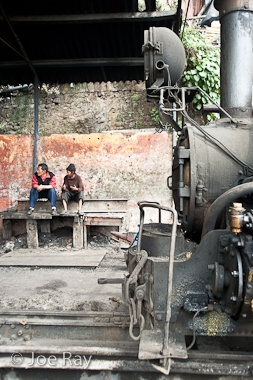
Trains cut through the transient, mesmerizing sights of a country going nonstop
DELHI - Jump on a plane, pop up here and walk around for a day and it feels like your brain is stuck on ‘spin.’ An autorickshaw (a souped-up three wheeled scooter/taxi) blazes through traffic and the driver, one foot on his lap, will squeeze through openings so you can touch the bus to your left and the gravel truck to the right. Ahead, a couple weaves through traffic on a scooter, the woman sidesaddle on the back, ponytail swaying behind her in the breeze.
On a market street, the assault on your senses and emotions is complete. A vendor sells flowers, above him, an electronics shop blares white light and sound. Just behind, a crowd gathers around a street cart full of madly bubbling fritters. Under your arm appears a string of painfully poor children while masses of people file by, parting like a river around the cow in the road.
In the beginning, it’s hard to get India to stop.
Stand and stare for a few moments in one of India’s cities and you’ll understand the impossibility of summing up the country and how it sends you running into the recesses of your mind for quiet. The train system, however, is what the French would call a fil conducteur, a ‘conducting wire’ that links and combines India’s dizzying disparate elements - country and city, rich and impossibly poor, calm and chaotic. It is a rolling microcosm, a big, blue myth, proudly trundling along at an impossibly slow average speed.
Despite the myriad transportation possibilities available - from cycle rickshaws to Bombay’s wonderfully cool Premier Padmini taxis, the king of them all is the Indian Railways, the largest single-management train system in the world. Like Jessamyn West’s description of American rails as a “big iron needle stitching the country together,†India’s also serves as a metaphor for the whole country.
I know nothing of this when I board my first sleeper, but I’ve planned a route that will take me from Delhi to the Ganges and back, another from Mumbai to southern Goa and a night train from Kolkata toward India’s border with nepal to see the holy grail of train enthusiasts - The Darjeeling Himalayan Railway.
The first experience a night train - the Delhi to Benares Shiv Ganga Express. Onboard, different slices of life plays out in every direction – there’s an intimacy as if you’re sitting at someone’s café table or their living room - little movies that roll right in front of you or slide slowly by outside the window.
Between each column of sleeper-car beds, three ceiling-mounted fans spin away madly. Two men chat on either side of a berth and when a third plunks himself between them, they barely flinch.
Vendors walk up and down the aisles calling “Chai! Chai! Chai!†hawking their sweet, milky tea, followed like the Pied Piper by a parade of wallahs (people who perform specific tasks) selling different foods, including complete dinners made in mammoth galley cars. This isn’t the civilized charm of the TGV, it’s funky, vibrant and alive.
En route to Benares, we pass a temple festooned with garlands of red and white lights and the four year old girl in the family in front of me shrieks with joy when she sees it, putting her hands together to pray.
Once in the city, miles of ghats - concrete stairs that stretch for miles along the land’s drop-off - lead down to the Ganges. Travel-weary pilgrims come to bathe in its sacred waters, locals wash their clothes and the dead are brought to be cremated in riverside funeral pyres. The smoke hovers over the waters, sticks in the back of your throat. Yet it’s not disconcerting. Instead, it is hard not to be moved by peoples’ devotion and the beauty and mystery of the Hindu temples that crown the ghats. The lines between life, religion and ritual aren’t blurred, they don’t exist. Pilgrim or tourist, you are part of the flow.
At night, sitting atop a ghat, the moon glows behind a haze that makes every-thing in the sky blend with the river - a continuum where stars and far-off candles floating on the water’s surface are confused - a dark sea overhead that stretches into the water below my feet.
Back on the train, now heading between Varanasi and Agra, where I’ll watch hundreds of children on rooftops fly kites with the Taj Mahal as a backdrop, the differences between the many travel classes become clearer.
Indian trains can be dirty, bordering on disgusting, frustrating and incredibly hot, even with the fans blasting away. The higher up the travel class scale you go, the more private and comfortable the experience is – and more insulated, for bet-ter and worse.
Sleeper class without A.C. is the best and worst of Indian rail travel - it’s where you’ll most likely talk to your neighbor and see the glorious weirdness of it all - the tiny scenes of family life, the snoring and the aggressively beautiful eunuchs who shame travelers into giving them money, then begrudgingly bless them when they do, the possibility to stare out the window for hours or sit in the open door between two cars and recalibrate your take on life.
The Mandovi Express, the 12-hour ride ride between Mumbai and southern Goa, is a near bust. I’ve chosen to spend the day on the train and discover that not only are the windows sealed shut in 2A class, but on this hot day, they won’t open the exit doors between stops until early evening. You want the wind in your face on these rides. Once they finally open the doors, though, it’s all worth it. Toes dangling out in the void, it’s a beautiful show.
Palm trees begin to appear and near Kudal the sun becomes a golden orange unseen further north. We’re remote enough that water buffalo in the train’s shadow are still spooked by the passing engine. People continually stop to watch the train’s blue streak go by - children playing cricket halt their match and smiling, clasp their hands overhead in a salute.
Further on, a woman walks toward a distant village, alone in a great wheat field, her flowing sari a sunlit blaze of orange. A few miles later, a man sits in the shade on the edge of a similar field, papers in his lap, pen in hand and a look on his face like he’s writing a lover’s poem to her.
Off the train, in the sleepy seaside beach town of Benaulim, I walk along the shore, trying to digest two weeks of city bewilderment. My feet are just under the water’s surface and in the space between wet and dry in front of me, millions of tiny clams rise to the surface like effervescent bubbles then immediately shimmy into the sand to submerge themselves when the water disappears. Above them, coin-sized crabs scuttle about and a few steps further out, their plum-sized big brothers do the same.
For my next leg, I cheat. Getting around on trains can take days. Rides can be incredibly long. “On time†is a happy coincidence and there are points when it’s simply a good idea to punt and take a plane like I did between Delhi and Bom-bay. A few hours on an airplane can save a day or three on a long route.
Ironically, it’s on a cross-country flight between Goa and Kolkata that I’m given an explanation of Indian sentimentality for their railways.
“The train is not about getting to a destination. In the winter it travels through fog and unknown villages. There are even places where it stops without any build-ings,†says Somit Doshi, 38, who runs Strawberry Outbound , an outdoor adven-ture and team-building company. “I do a train journey once a year with a group of friends. You meet fellow passengers - all sorts of people. We call it ‘romancing.’ If you’re going up a hill in the mist you hear the sound of the whistle or the click of the bell before you leave a station ... it might seem primitive, but we like it.â€
His words conjure author Ruskin Bond’s tales of remote India. They also remind me why I’m heading to Darjeeling – for a joy ride on the Toy Train. (cq caps)
The Darjeeling Himalayan Railway (a.k.a. the Toy Train) , built between 1879 and 1881 , is a set of century-old coal-powered steam engines which ride up into the mountains and directly into the hearts of train aficionados around the world. It winds up through thick forest, tiny hill towns lost in the clouds and tea plantations with their flat topped bushes making a pointillist’s study of green, punctuated only by the bright flecks of color worn by the women picking leaves and buds that make the world’s best tea.
The train picks its way uphill on special, two-foot wide narrow gauge track com-plete with S-curve style reverses, and even curlicue loops to help it wend its way up into the clouds. It is an engineering marvel and a labor of love. Lots of labor. Every switch, whether spring point or tumbler, needs a switchman and 100 la-borers maintain the fleet of 10 steam and four diesel engines in a Tindharia workshop.
You hear it first. An goose-bump raising whistle blast that echos through the val-leys between the train’s origin at the New Jalpaiguri station in Siliguri, creeps over the 7,407-foot high point at Ghum before coasting down to Darjeeling’s hill station. Closer, there will be a plume of smoke that looks like a hillside fire, accompanied by the unmistakable chug-chug-chug.
It feels culled from a reel of cinematic railroad history that by the time it appears hissing and spurting around the corner, every eye is on it.
“We’ve seen this since we were babies. The people of Darjeeling love the steam engine. It has this rhythm, it has this sound… If it goes uphill, it makes one sound and if it goes downhill, it makes another,†says Hiren Trikhatri , chief ticket in-spector at the Darjeeling station, the line’s home in name and spirit. “Everyone still waves when the train goes by, even the baby in the mother’s arms. If tourists miss this ride, they’ve blown their itinerary. You don’t find something like this anywhere else in the world.â€
To hedge my bets, I’ve reserved a seat on two separate days for the two-and-a-half-hour ‘joy ride’ from Darjeeling to the nearby town of Ghum, whose station rises from the mist like a turtle plucked from “20,000 Leagues Under The Sea.â€
Three times may be the charm. Though I got as far as creating a section in my notebook called ‘On The Toy Train’ while in my seat, we never move. A shipment of bad coal has clogged the trains’ furnaces and hobbled the engines.
After a week in Darjeeling, however, I’m not disappointed. I’ve smelled the wet coal in the air and watched the train wend its way through the heart of town, the rails crossing the road with impunity or appropriating the sidewalk when need be, traffic, four wheel or two foot be damned. I’ve watched the local women with their babies in their arms look up and wave as the train goes by. I’ve seen the train up close, watching it leak from every pore, watched repairs simply done with a mal-let and studied the conductor’s perch - each part bent and beautiful, polished by use of a million hands.
They say that you either leave India right after you get here or come back for the rest of your life. On her rails, I don’t think about leaving, just about how India’s frenetic pace slows as we travel along the seams. On her rails, the needle gets under my skin.
Follow me on Twitter: @joe_diner and on Facebook.
IF YOU GO
How to book a ride
Indian Railways reservations
www.irctc.co.in
Tickets can be purchased online but the site often balks at foreign credit cards. You pay a premium at http://www.cleartrip.com, but the probability of the transaction going through improves considerably. Tickets can also be purchased at train stations. Watch for and use the tourist ticket line at many stations. A typical bare-bones sleeper ticket on an overnight train runs around $10 and goes up gradually from there.
What to eat
The many lines have individual specialties and their kitchens often are larger and better than many restaurants. It’s worth asking a fellow passenger what’s good on a particular line. It’s hard to spend more than a few dollars on a meal.
Where to stay
Palace On Ganges
B-1/158 Assi Ghat
Varanasi (Benares)
+91-542-2315050
.(JavaScript must be enabled to view this email address)
Nice rooms upward of $50 per night. Make sure to ask to see other rooms with a view of the ghats, or the rooftop room.
Chateau Windsor Hotel
86 Veer Nariman Road, Churchgate
Mumbai
+91-22-6622-44-55
Basic, and fun. About $75-$100 per night depending on amenities. Ask to see available rooms when you check in.
www.chateauwindsor.com
D’Souza Guest House
On the small road between Benaulim and Colva
Benaulim (southern Goa)
+91-832-2770583
Stay in a local home at modest prices a short walk from the beach.
Hotel Aliment
Dr. Zakir Hussain Road
Darjeeling
+91-354-2255068
.(JavaScript must be enabled to view this email address)
Not for those who need frills — the water heater is on for 90 minutes a day, the door lock is a padlock — but it has an authentic hiker-backpacker set feeling. Try to stay on the upper floors.
See the story as it ran in the print version: page 1, page 2.